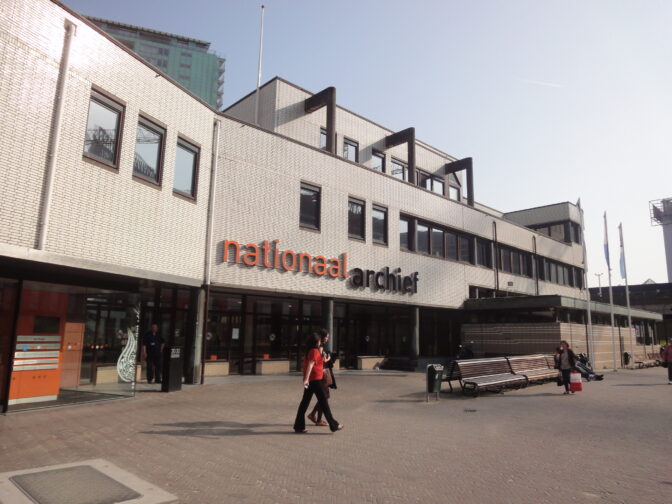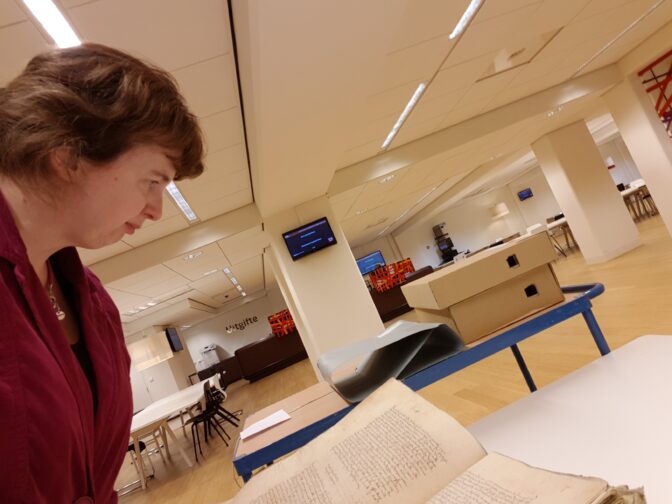Are you planning a trip to the Netherlands and want to do some on-site research while you’re here? Here are ten tips to make the most of the time you have available.
1: Check if the record is already online
There is little research that requires on-site research anymore in the Netherlands. Many of the popular genealogical records have been scanned and are available online for free. Once records have been digitized, the originals are not available anymore. You can check the website Digital Resources Netherlands and Belgium or the finding aids and indexes at the websites of the archives to see which records are online.
2: Government records are in archives, not libraries or courthouses
In the Netherlands, government records are kept in archives, not in libraries or courthouses. The archives also keep many other records, for example records of churches, membership organizations, and businesses. Access to archives is free.
In libraries in the Netherlands, you can find genealogical publications or books and magazines about the history of the place where your ancestors lived. Some libraries have special collections that include manuscripts. These are typically records created by non-government organizations or private individuals, and not government records.
3: Know which archive to visit
The National Archives in The Hague keeps records of the departments of the national government, the cabinet of the King/Queen, and from the province of Zuid-Holland.
The regional archives in the provincial capitals keep the records of the provincial government and the national government records for that province (e.g. court records, prison records).
Regional and city or municipal archives have the records for municipalities, including town records, notarial records, municipal correspondence, etc.
An overview of all archives in the country can be found at this map of archives. You can also do a Google search for the town you ancestors lived, combined with a term like “archief” [archive], “regionaal historisch centrum” [regional historical center], “stadsarchief” [city archive], “gemeentearchief” [municipal archive], or “streekarchief” [district archive].

National Archives of the Netherlands. Credits: Vera de Kok, Wikimedia Commons (CC-BY-SA)
4: Use the online finding aids to prepare
Most archives publish their finding aids online. Use these to know if the record you’re looking for is available at the archive. Having a research plan ready, including record group numbers and call numbers, will make your visit more efficient. You can find many finding aids at Archieven.nl, at Archives Portal Europe, or at the website of the archive (see tip 3).
5: Know what to bring to the archives
When visiting the archives, bring the following items:
- Passport or other government-issued ID.
- Visitor card, if you were there before. If this is your first visit, a new visitor card will be issued.
- Paper and pencil, or laptop/tablet. Most archives don’t allow the use of pens.
- Camera/phone. Make sure you know how to turn off the automatic flash since using flash is not allowed. Scanners that touch the records like wand scanners are usually not allowed.
- USB stick/thumb drive. Some reading rooms have book scanners or microfilm scanners that you may use for free. You can put the scans on your own USB stick.
- 50 cent, 1 euro, and 2 euro coins in case the locker requires any of these coins. Also useful for the coffee machine (see next item).
- Snacks/lunch. Most smaller archives don’t have a cafeteria although most have a coffee machine. You cannot bring food or drinks into the reading room so eat them in the designated breakroom or leave them in the locker.
Typically, you will not be allowed to bring bags or coats into the reading room. Some archives will even require you to take your reading glasses out of its case, to prevent you from hiding material in there. Archives will have lockers where you need to put your belongings. Some provide transparant bags to take items with you to the reading room. Just in case, make sure you’re able to carry whatever you want to bring into the reading room.
Some archives have guards at the entrance of the reading room. They may want to leave through your items when you leave to make sure you did not take any archival records with you.
6: Ask the reading room attendant for a quick tour
The reading room attendant is there to help you find the records. Let them know it is your first time visiting, and they will usually show you around the reading room and explain how to order records. The reading room attendant is also available for short questions, but will not do the research for you.
7: Bring a native speaker
Records in the Netherlands are typically in Dutch, though some are in French or Latin. If you don’t speak Dutch, bring someone along who does because you won’t be able to make sense of the records otherwise.

Yvette doing research at the National Archives. Selfie by Yvette Hoitink.
8: Check the opening hours
On the archives’ website, check the opening hours and the holidays to make sure the archives are open on the day you intend to visit. Smaller archives are open by appointment only, others require you to reserve a seat. Some have holidays and closures for events in a different section of the website than their regular opening hours. When in doubt, email or call first.
9: Make sure the records are public
The finding aids should tell you if the records you need are public. Most records of people born less than 100 years ago are not public, including birth records (public after 100 years), marriage records (public after 75 years), death records (public after 50 years), court records (public after 75 years), and notarial records (public after 75 years).
If you want to access records that are not public yet, email several weeks (preferably at least six weeks) in advance and submit permission or proof of death of the persons involved. You will probably need an appointment to see records that are not public. Be prepared to take notes, as you will probably not be allowed to take photographs or have copies made.
10: Try to reserve the records in advance
Several archives have the option of online reservation. You may find a button in the finding aid to reserve the records, or you may be able to email a list of the records you need. That way, the records will be ready for you in the reading room when you arrive, allowing you to make the most of your visit.
Records you order during the day typically take up to 30 minutes to be retrieved from storage and brought to the reading room. Some archives have off-site storage, where you need to reserve the records at least a day or two in advance. Archives that are open in the evening or on weekends sometimes require you to reserve the records in advance too.


I will be attending the MyHeritage workshop and plan to spend a day in the Hague at one of the archives looking at records. Do you have a suggestion on how I can contact a local researcher who would be willing to help me navigate the archive and translate for me?